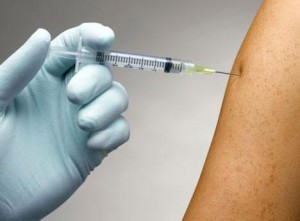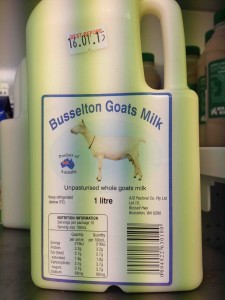For humans, Salmonella is always bad news. The bacterial pathogen causes paratyphoid fever, gastroenteritis and typhoid. But for snakes, the bacteria aren’t always bad news. Certain species of Salmonella are a natural part of the snake microbial collective. However, the occasional species can cause a disease. Reptile handlers would love to know when they have a potentially problematic pathogen lurking in the midst of their snakes.
 To better understand the variety of Salmonella species harbored by captive reptiles, Staten Island Zoo has teamed up with the microbiology department at Wagner College. Eden Stark, a graduate student on the project, her advisor, Christopher Corbo, and the zoo’s curator and head veterinarian Marc Valitutto want to know how many Salmonella species live among the Staten Island Zoo rattlesnakes. The zoo has a long history of exhibiting one of the most comprehensive rattlesnake collections in the world, currently with 21 of 38 species on display.
To better understand the variety of Salmonella species harbored by captive reptiles, Staten Island Zoo has teamed up with the microbiology department at Wagner College. Eden Stark, a graduate student on the project, her advisor, Christopher Corbo, and the zoo’s curator and head veterinarian Marc Valitutto want to know how many Salmonella species live among the Staten Island Zoo rattlesnakes. The zoo has a long history of exhibiting one of the most comprehensive rattlesnake collections in the world, currently with 21 of 38 species on display.
So far, Stark has surveyed 26 species of snakes. “Few other institutions have undertaken such broad scale analysis of Salmonella in snakes,” notes Valitutto. The research will be presented at the American Society for Biochemistry and Molecular Biology (ASBMB) Annual Meeting during Experimental Biology 2015.
In particular, the investigators are on the lookout for pathogenic species of Salmonella, such as Salmonella arizonae. This species of Salmonella has been known to cause infections in snakes called osteomyelitis. It has a predilection for the bones, such as the vertebra. The bone may deform, and as the infection spreads, the deformed vertebrae may stop the snake from slithering.
The infection may be surgically removed or treated with antibiotics if it’s localized and caught early enough. But if left untreated, the infection may eventually cause the snake to die.
“If we do get a snake that is positive for arizonae, we’re concerned,” says Valitutto. “We would not want add something like that to our collection because there’s a possibility it will infect our other reptiles.”
Another reason to account for the different Salmonella species is for the safety for the zookeepers. Salmonella “is strictly a pathogen for humans. It’s something that anyone who handles reptiles, even people who keep them at home as pets, has to be very cautious about in handling them or anything that is part of their enclosure,” says Corbo.
To categorize the Salmonella species, Stark isolated the bacteria from snake fecal samples. The feces were collected by seasoned zookeepers at Staten Island Zoo who know how to handle venomous snakes.
 As expected, because snakes are natural hosts for Salmonella, Stark found a large number of Salmonella species in the fecal samples. She did find several species of Salmonella that are well-known as human pathogens, such as Salmonella typhimurium which can cause diarrhea, abdominal cramps, vomiting and nausea for about a week.
As expected, because snakes are natural hosts for Salmonella, Stark found a large number of Salmonella species in the fecal samples. She did find several species of Salmonella that are well-known as human pathogens, such as Salmonella typhimurium which can cause diarrhea, abdominal cramps, vomiting and nausea for about a week.
In the few cases where Stark possibly detected the snake pathogen S. arizoniae, the news was interesting to the zoo because the snakes weren’t showing any symptoms evidence of disease. “It’s important for keepers to know that a particular species of snake is carrying a potential pathogen so they can keep an eye on it,” says Corbo.
Corbo adds that the handlers will now know that the tools they use to handle the snakes harboring S. arizonae need to be cleaned with extra care so that they don’t accidentally infect other reptiles, especially snakes.
Stark is now delving further into the analysis with the polymerase chain reaction. She is testing each Salmonella species she isolates with the technique to see if the bacteria are expressing proteins known as virulence factors. This detail is important because not every potential pathogen will express virulence factors. The bacteria only become a problem if and when they turn on the expression of virulence factors and become infectious agents (for this reason, Salmonella arizonaie within snakes can even be further subdivided into more pathogenic serotypes).
 I’ve said, I will help with any food safety issues, but otherwise I’m out.
I’ve said, I will help with any food safety issues, but otherwise I’m out.










